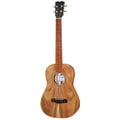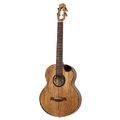When it comes to choosing a ukulele, the variety of sizes and types available can be both exciting and overwhelming. Each type of ukulele offers its own unique characteristics in terms of sound, playability, and comfort. In this article, we'll explore the different types of ukuleles, including concert, soprano, tenor, and baritone, and discuss their advantages to help you make an informed decision when selecting the perfect ukulele for your needs.
1. Soprano Ukulele
The soprano ukulele is the smallest and most traditional size, known for its bright and cheerful sound. Soprano ukuleles typically have a scale length of around 13 inches and are favored by beginners and players with smaller hands. Their compact size makes them easy to carry around and play, making them an excellent choice for children and travelers. Soprano ukuleles are ideal for playing traditional Hawaiian music and are well-suited for strumming and chord-based playing styles.
Advantages:
Bright and cheerful sound
Compact and lightweight
Ideal for beginners and travelers
Traditional ukulele size
2. Concert Ukulele
The concert ukulele is slightly larger than the soprano and offers a fuller, more resonant tone. With a scale length of around 15 inches, concert ukuleles provide more room on the fretboard for finger placement, making them easier to play for players with larger hands. Concert ukuleles strike a balance between size and sound, making them a popular choice for intermediate players and those looking for a versatile instrument that can handle a variety of playing styles.
Advantages:
Fuller and more resonant tone than soprano
Comfortable fretboard size for larger hands
Versatile instrument for various playing styles
Ideal for intermediate players
3. Tenor Ukulele
The tenor ukulele is larger than the concert and soprano sizes, with a scale length of around 17 inches. Tenor ukuleles produce a deeper and richer sound compared to smaller sizes, making them well-suited for solo performances and fingerstyle playing. Their extended range and larger fretboard make them a favorite among advanced players and performers who appreciate their versatility and playability.
Advantages:
Deeper and richer sound than soprano and concert
Extended range and larger fretboard
Versatile instrument for solo performances and fingerstyle playing
Ideal for advanced players and performers
4. Baritone Ukulele
The baritone ukulele is the largest size and features a scale length of around 19 inches. Baritone ukuleles have a deeper, more guitar-like tone and tuning, making them a popular choice for players who prefer a lower pitch and a more substantial instrument. Their size and tuning make them suitable for playing a wide range of musical styles, including folk, blues, and jazz.
Advantages:
Deeper, more guitar-like tone
Lower pitch and tuning
Suitable for a wide range of musical styles
Ideal for players who prefer a more substantial instrument
Conclusion
Understanding the different types of ukuleles and their advantages is essential for selecting the right instrument that suits your preferences and needs. Whether you prefer the bright sound of a soprano ukulele, the balanced tone of a concert ukulele, the richness of a tenor ukulele, or the depth of a baritone ukulele, there's a ukulele type out there that's perfect for you. Consider factors such as size, sound, playability, and musical style when choosing your ukulele, and don't be afraid to try out different types to find the perfect fit for your playing needs.
By understanding the unique characteristics and advantages of each ukulele type, you'll be better equipped to choose the perfect instrument that suits your playing style and preferences. Whether you're a beginner or an experienced player, exploring the world of ukuleles offers endless opportunities for musical expression and creativity.


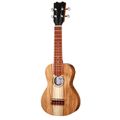
 Thomann Soprano Ukulele Standard
Thomann Soprano Ukulele Standard
 Harley Benton Ukulele DIY-Kit Sopran
Harley Benton Ukulele DIY-Kit Sopran
 Cascha Premium Soprano Uku Solid Top
Cascha Premium Soprano Uku Solid Top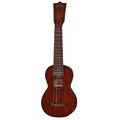
 Martin Guitars 0 Soprano Ukulele
Martin Guitars 0 Soprano Ukulele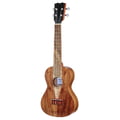


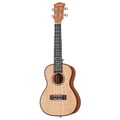
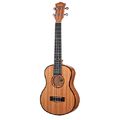


 Flight Victoria CEQ-A Tenor
Flight Victoria CEQ-A Tenor
 Kala KA-SMH-TG-CE Tenor Ukulele
Kala KA-SMH-TG-CE Tenor Ukulele